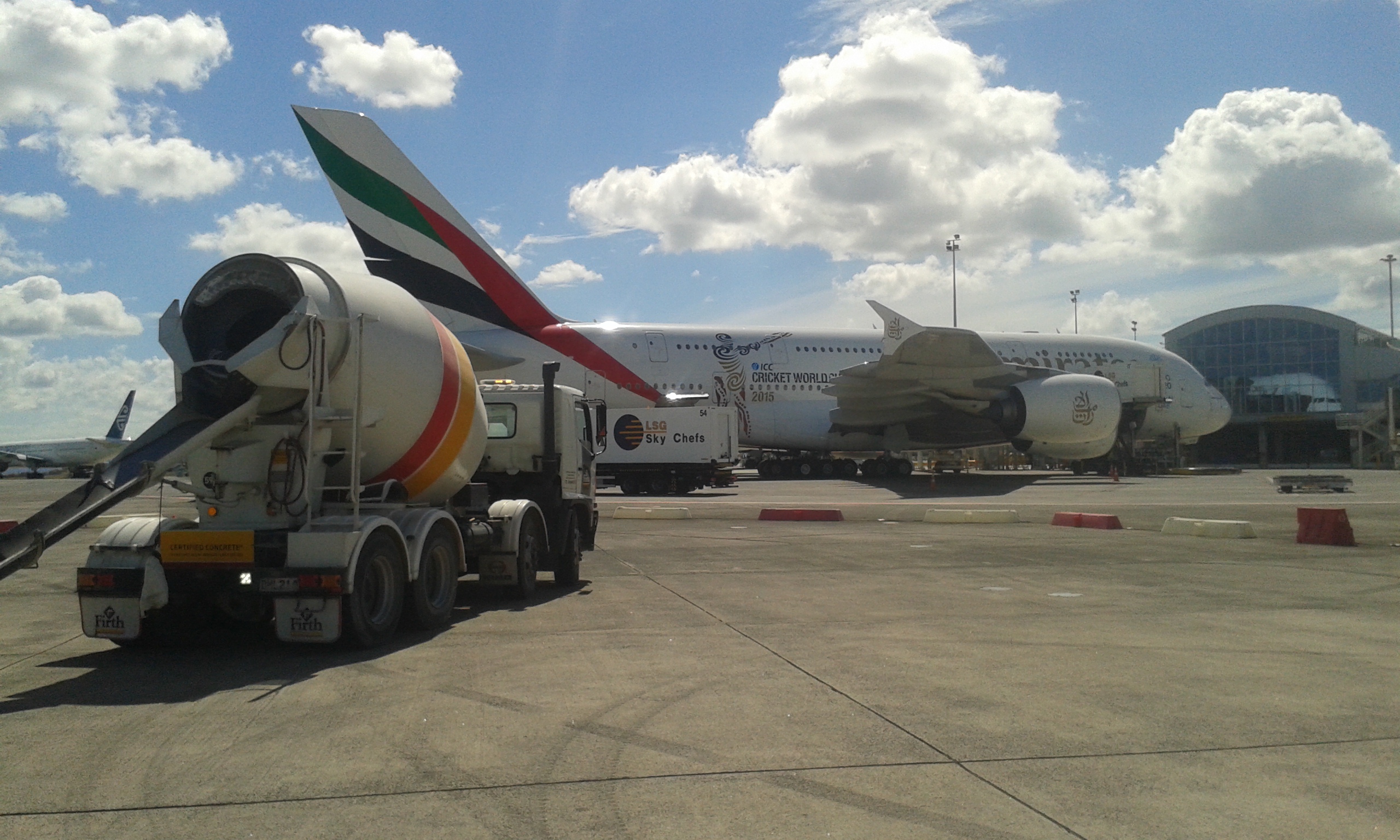
A Firth truck in the foreground of a double decker Emirates Airbus A380
In the last few years Aucklanders have seen a marked increase in traffic congestion at the country’s largest airport. This is a reflection of the exceptional growth in passenger numbers to Auckland International Airport - a whopping 26% increase in the last two years. Keeping up with this phenomenal growth has meant the Airport Company is constantly upgrading its facilities, including runways and taxiways, to stay ahead of demand.
With responsibility for the maintenance and development of the airport’s runways over the past 20 years, Brian Perry Civil has had a fairly consistent presence at the site. “Our relationship with the Airport Company goes back many, many years,” says Matt Findlay, Auckland Branch Manager for Brian Perry Civil (BPC) in Auckland. “And in all that time and all those thousands of metres of concrete that have been laid Firth, our sister company, has been by our side.”
“We have had a mobile concrete plant installed at the airport for about 20 years,” says Jamie Frew, Regional Operations Manager (Auckland) for Firth. “Work on the runways and taxiways has been pretty regular over the years so it was decided to upgrade this to a more reliable plant, with greater capacity, about seven years ago. The plant is situated on the other side of the runway near the water which we man when required. This has meant that we can supply the BPC and Higgins teams without being concerned about traffic delays. Keeping the airport open during maintenance or development work is a must so the quicker the pours can be done the least disruption there is to the airport’s daily operation.”
With more carriers operating longer routes and requiring larger aircraft to complete the journey, the Airport Company needed to offer additional parking for aircraft such as the Airbus A380, which is now a regular visitor to Auckland. This required extensive work including the extension of some of the existing taxiways, the construction of a new taxiway and the addition of new hardstand areas to the west of the international terminal to accommodate the larger planes.
“Twenty-two thousand m3 of concrete was poured in the last few months of 2016 for the taxiways and hardstands,” says Matt Findlay, Branch Manager, Auckland for BPC. “We have done a lot of accelerated works for the airport in the past 12 months as aircraft parking has been at a premium towards the end of 2016. This has meant there has been a lot of flexibility shown by our suppliers and the service provided during that period has been really appreciated.”
A Bidwell concrete paving machine, which straddles the width of the taxiway, was used to lay 500 to 550 m3 of concrete per day.
“Over 20,000 m3 in just a couple of months was a big effort by all the teams involved,” adds Jamie. “This was a large section of work which had to be completed in a short time, requiring a strong working relationship between the three companies – Firth, Higgins and BPC. Our teams know each other very well and things ran pretty smoothly.”
Jamie explains that supply used to be very irregular but has steadily increased over the years. “The Airport has a cyclic replacement programme of sections of runway and taxiways in place which requires a regular concrete supply. They’re a great client and we are pleased to be able to support BPC and Auckland Airport in exploring innovations and safety initiatives to keep growing the quality of delivery and service we provide.”
Over the next five years the Airport Company predicts they will spend $1 million a day in its development, with the knowledge that passenger numbers passing through the airport are estimated to top 40 million in the next 25 – 30 years.
Principal: Auckland International Airport Limited (Airport Company)
Customer: Brian Perry Civil
Contractor: Higgins Group
Location: Auckland International Airport
Product: Certified Concrete®
|
Auckland International Airport facts and figures …
|
|
… and a brief history
|

